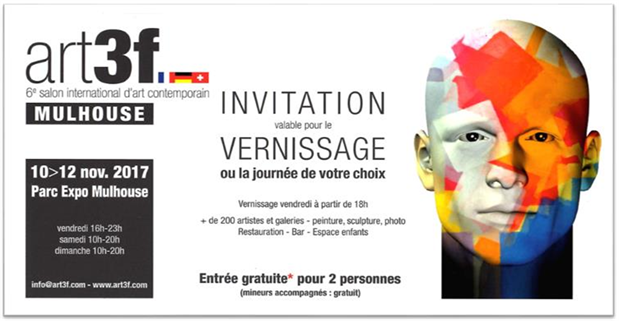My single line text
My single line text
My single line text

TESHUVA'
Mulhouse (France) ART3F International Contemporary Art Fair 2017
October 2017
Andrea Fallini

B. Zanconato will be present at the Mulhouse International Contemporary Art Fair (November 10th – 12th , 2017) with an exhibition titled "Teshuvà" (תשובה).
"Teshuvà" (תשובה) is a Jewish term often translated as “repentance” but in reality it literally means “return”. And it certainly is in this sense that B.Zanconato has chosen it as title for her show at the International Contemporary Art Fair in Mulhouse, France (November 10th – 12th, 2017). Also in this case the artist takes advantage of her presence at the fair not only to present her works but, above all, to offer an emotional path and to propose a series of reflections.
According B.Zanconato, "Teshuvà" (תשובה) is the symbol of the return that man turns towards what is actually his true essence, that journey of recovery (and therein lies the return) towards his true human nature. In this sense, also includes the current meaning of repentance given that this process of change, of re-appropriation of themselves imply de facto the recognition of behaviors deemed negative or at least not adequate, and therefore the intention not to repeat the same mistake or the same attitude in the future. It is interesting to note that even in the Jewish tradition, the concept of Teshuvà is based on the fundamental belief that man has free will, that is the ability to choose and the willingness to apply it and that neither the legacy of the past neither the environmental conditions and material impediments, are such as to block the human potential to change and improve.
With this introduction in mind and in front to the central artwork of the show (“Wall of Dolls”) ”), the audience can be disoriented. In fact, the work, that the artist defines as “devanture”, takes inspiration from the subject of violence against the women and presents the slogan that recurrently is pronounced in public debates, discussions and media: “Education is the key”. Actually, in the Zanconato’ s work, the slogan is presented in its interrogation form (“Is education the key”) and it is presented as a kind of barrier, a wall on which white winged figures placed upside down emerge, dolls to represent symbolically the victims of violence. But education is really the key of all this? And what kind of education?
"Teshuvà" (תשובה) is a Jewish term often translated as “repentance” but in reality it literally means “return”. And it certainly is in this sense that B.Zanconato has chosen it as title for her show at the International Contemporary Art Fair in Mulhouse, France (November 10th – 12th, 2017). Also in this case the artist takes advantage of her presence at the fair not only to present her works but, above all, to offer an emotional path and to propose a series of reflections.
According B.Zanconato, "Teshuvà" (תשובה) is the symbol of the return that man turns towards what is actually his true essence, that journey of recovery (and therein lies the return) towards his true human nature. In this sense, also includes the current meaning of repentance given that this process of change, of re-appropriation of themselves imply de facto the recognition of behaviors deemed negative or at least not adequate, and therefore the intention not to repeat the same mistake or the same attitude in the future. It is interesting to note that even in the Jewish tradition, the concept of Teshuvà is based on the fundamental belief that man has free will, that is the ability to choose and the willingness to apply it and that neither the legacy of the past neither the environmental conditions and material impediments, are such as to block the human potential to change and improve.
With this introduction in mind and in front to the central artwork of the show (“Wall of Dolls”) ”), the audience can be disoriented. In fact, the work, that the artist defines as “devanture”, takes inspiration from the subject of violence against the women and presents the slogan that recurrently is pronounced in public debates, discussions and media: “Education is the key”. Actually, in the Zanconato’ s work, the slogan is presented in its interrogation form (“Is education the key”) and it is presented as a kind of barrier, a wall on which white winged figures placed upside down emerge, dolls to represent symbolically the victims of violence. But education is really the key of all this? And what kind of education?
In front of continuing violence reported in chronicles, with “Wall of Dolls”, the artist wishes to bring attention to the hypocrisy of the collective catharsis of which we are witnessing on a daily basis. Events, stances, political initiatives represent the barren cliché summarized by the slogan “Education is the key” and each time new initiatives are launched in schools (which in the current view are the only places authorized to impart the good education) without addressing the issue in its broader complexity.
Certainly raise awareness of the younger generation is a very useful thing, but the fundamental question that one puts, and that never emerge at the time of daily violence against women, is the lack of a deep analysis of the state of gender relationship and the complete deficiency of a consistent vision with the launched message. How, indeed, can be effective an awareness campaign aimed at eliminating discrimination woman-man if, in practice, gender differences remain at the core of daily behaviour (that serve as example to younger) and remain models of social and gender relations at all levels?
Is it perhaps enough to demonize extreme
Certainly raise awareness of the younger generation is a very useful thing, but the fundamental question that one puts, and that never emerge at the time of daily violence against women, is the lack of a deep analysis of the state of gender relationship and the complete deficiency of a consistent vision with the launched message. How, indeed, can be effective an awareness campaign aimed at eliminating discrimination woman-man if, in practice, gender differences remain at the core of daily behaviour (that serve as example to younger) and remain models of social and gender relations at all levels?
Is it perhaps enough to demonize extreme
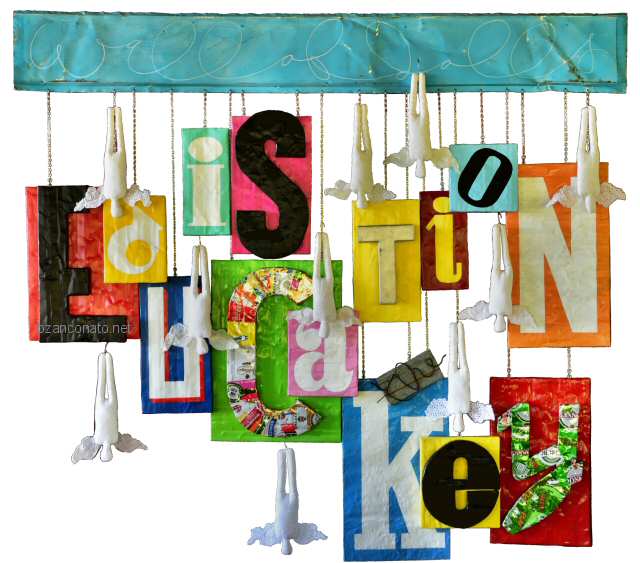
behaviours, leading to the feminicides, when, as reported by the latest statistics, one in three women has suffered and continues to suffer acts of violence? Or maybe to face the issue broadly, directly, practically, challenging the gender diversity in itself as an identifying element, is it too revolutionary and destabilizing?
This masking of the key issue is the basis of the expressive mode used by the artist: first of all, as mentioned, the slogan was revived in terms of question (where, however, the question mark is omitted), but, above all, the representation is characterized by strong graphic elements, typical of advertising and marketing. With this work B.Zanconato seems to tell us that this approach is nothing but advertising, cosmetic actions, a sort of “devanture” (in French this term identifies the external outfitting of many shops) because nothing will never change until we will consider people in a different way according their gender, we will educate and we will push them for different attitudes depending on their sex. And, look closely, the dolls that B.Zanconato has included in her work have no sexual references to underline that the victims of the current education and mentality are actually not only women but also men, also them subjects of a cultural climate that has grown them up inculcating the concept of gender dominance: a man is liable only if he dominates and cannot be recognized him any kind of fragility.
This masking of the key issue is the basis of the expressive mode used by the artist: first of all, as mentioned, the slogan was revived in terms of question (where, however, the question mark is omitted), but, above all, the representation is characterized by strong graphic elements, typical of advertising and marketing. With this work B.Zanconato seems to tell us that this approach is nothing but advertising, cosmetic actions, a sort of “devanture” (in French this term identifies the external outfitting of many shops) because nothing will never change until we will consider people in a different way according their gender, we will educate and we will push them for different attitudes depending on their sex. And, look closely, the dolls that B.Zanconato has included in her work have no sexual references to underline that the victims of the current education and mentality are actually not only women but also men, also them subjects of a cultural climate that has grown them up inculcating the concept of gender dominance: a man is liable only if he dominates and cannot be recognized him any kind of fragility.
The topic of prevarication introduced by "Wall of Dolls" is emphasized by another artwork on view in Mulhouse: “The child bride”. The subject is that of child brides who, oblivious of what awaits them and deceived by the party atmosphere and the bridal gown, are sold in marriage to grown men according a cruel wedding tradition that considers them as living goods to trade within a comfortable and economic agreement between families. Only apparently the theme touches social customs and habits that today seem distant: indeed several cases of child brides have been reported in our society (albeit in the context of families originating from regions where this practice is still in use). In addition, only a few generations ago in Italy (if not in Europe) many girls were forced by their families to marry, for different reasons, men who had not chosen, not to mention the fact that they could not decide the direction of life and profession they wanted to do.
But the topic here is not just the violence doubly suffered by these girls (by the husband who initiates them, not yet ready and aware, for adult life and by the family or the father that,
But the topic here is not just the violence doubly suffered by these girls (by the husband who initiates them, not yet ready and aware, for adult life and by the family or the father that,

more like a master than as a father, makes trade of them) but, also and above all, that of atavistic and not yet passed right to male supremacy, which focuses on strength and violence. This false principle still cages so many women (and many men) who have suffered and suffer from a very early age this kind of indoctrination. It is clear that the consequences of this kind of vision and “education” are flagrant if not borderline, in the cases of child brides but it must be said that, subtly, are still crept up into the mindset and daily life of many of us: for so many reasons, all of convenience, remain tacitly latent ... until, for the most various reasons, emerge with extreme ways, always violent.
This camouflage element, that is, of presence of a sort of double standard that leads to publicly condemn the extreme consequences of things that actually are implicit in the still current mindset, that is at the heart of the earliest artworks on display, it powerfully emerges in another B.Zanconato’ s work, another “devanture” in exhibition in Mulhouse: “G.R.”.
“G:R.”, on one hand, represents a reflection on truth (that of the media, in the first instance, influenced by understandable reasons of viewing figures, related to the same information business, but also that of the public, which seems to rely directly on the media and that over time, undergoes an inexorable process of degradation), on the other hand, a reflection on the collective emotional superficiality in front of violence and its reasons.
This camouflage element, that is, of presence of a sort of double standard that leads to publicly condemn the extreme consequences of things that actually are implicit in the still current mindset, that is at the heart of the earliest artworks on display, it powerfully emerges in another B.Zanconato’ s work, another “devanture” in exhibition in Mulhouse: “G.R.”.
“G:R.”, on one hand, represents a reflection on truth (that of the media, in the first instance, influenced by understandable reasons of viewing figures, related to the same information business, but also that of the public, which seems to rely directly on the media and that over time, undergoes an inexorable process of degradation), on the other hand, a reflection on the collective emotional superficiality in front of violence and its reasons.
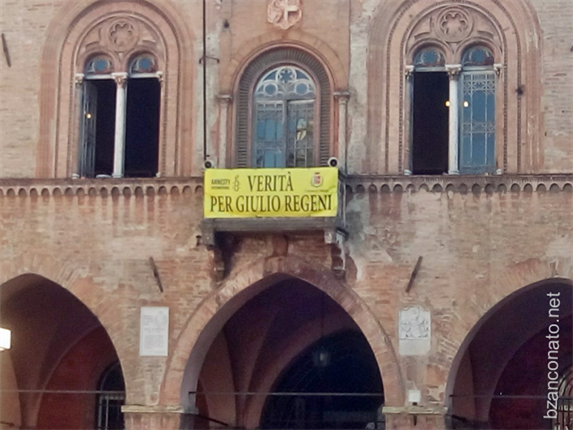
The case of Giulio Regeni (whose initials give the title of the artwork) is an emblematic example: immediately after the tragic death of the young Italian researcher in Egypt, socials worldwide and squares of many Italian cities were carpeted by yellow posters and banners praising the “truth”. But after some time, all this, so to speak, is “oxidized”.
And it is this attitude of easy emotional oxidation that the artist wants to highlight with this work: all initial empathy worn out within a short time and ran out with a presentation of some banner (especially from politics representations) or with the publication of the yellow sign on the social pages, or give a like on some website. In the same way, it was for other episodes that have occurred in Europe in recent years, where this need of stance, for many, has been solved and found hit catharsis through easy symbolic acts often implemented through socials (for example
And it is this attitude of easy emotional oxidation that the artist wants to highlight with this work: all initial empathy worn out within a short time and ran out with a presentation of some banner (especially from politics representations) or with the publication of the yellow sign on the social pages, or give a like on some website. In the same way, it was for other episodes that have occurred in Europe in recent years, where this need of stance, for many, has been solved and found hit catharsis through easy symbolic acts often implemented through socials (for example
publishing a representative image on your web page). And that's the interesting thing: the participation, that is to be there but as part of a group, even if for a short time, becomes the essential element perhaps even more of the expression of your thought in front of these acts of violence.
And the relationship with the group is the focus of “Io voglio TU DEVI” (I want YOU MUST). “Io voglio TU DEVI” sums up with a pithy graphics summary, the conflict of the individual immersed in contemporary society. In fact, on the one hand, in a dark corner, is the individual and his weak will, symbolized by the writing in cursive Io voglio (I want), oppressed if not threatened by a major imperative: TU DEVI (YOU MUST).
And the relationship with the group is the focus of “Io voglio TU DEVI” (I want YOU MUST). “Io voglio TU DEVI” sums up with a pithy graphics summary, the conflict of the individual immersed in contemporary society. In fact, on the one hand, in a dark corner, is the individual and his weak will, symbolized by the writing in cursive Io voglio (I want), oppressed if not threatened by a major imperative: TU DEVI (YOU MUST).
TU DEVI is the expression of the various components of contemporary life, subjecting the individual to an endless series of pressures in order to influence his behavior. And the lever on which everything is played is the sense of belonging. Membership in the family basically has always involved a series of rules which imposed certain behaviors (women always know). But modern society has expanded this concept: belong to the group means having the latest technology, because otherwise you are off; belong to the group means being always in shape; belong to the group means wearing one of the uniforms to the latest fashion; belong to the group means you are always looking young and charming, as evidenced by the advertising models by which we are daily bombarded and that show us what is the way to happiness. It's about following rules and traditions, it is to listen to what is suggested by specialists in the field, to follow trends, to chase the success that leads to more economic possibilities to extend the accumulation of new objects, looking for that gratification and that happiness which seem to depend on the new recipe that every day is proposed and which, coincidentally, should apply to everyone but does not apply to anyone. Pity though, that fashions change (it is the very concept of fashion that certifies it), that the latest technology becomes obsolete very quickly and that the reference models are unreachable: basically, if on one hand the happiness like fulfillment is handy, actually, never comes or is not going to last. And this, in the time, destabilizes, increases the feeling of inadequacy and distrust in themselves by triggering, as a result, a sense of
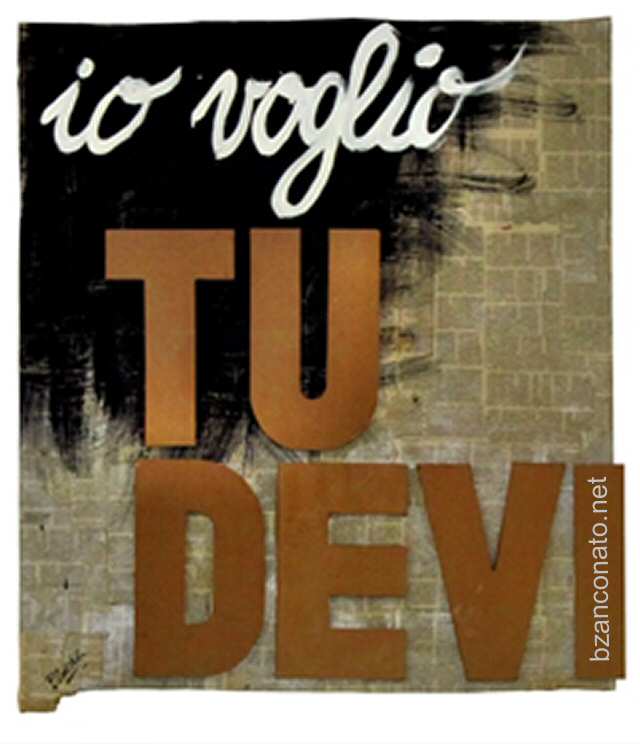
loneliness, that loneliness that society demonizes as the worst of evils but perhaps, looking better, is not so bad.
Solitude is the theme of “Before”. “Before” presents us part of a woman's face as seen through the peephole of a cell or through a small window. And the wooden surface that surrounds the face accentuates the separation, enhances the presence of a wall that stands between the viewer and the female figure that is represented as surprised during her reflection, within her own world.
Solitude is the theme of “Before”. “Before” presents us part of a woman's face as seen through the peephole of a cell or through a small window. And the wooden surface that surrounds the face accentuates the separation, enhances the presence of a wall that stands between the viewer and the female figure that is represented as surprised during her reflection, within her own world.
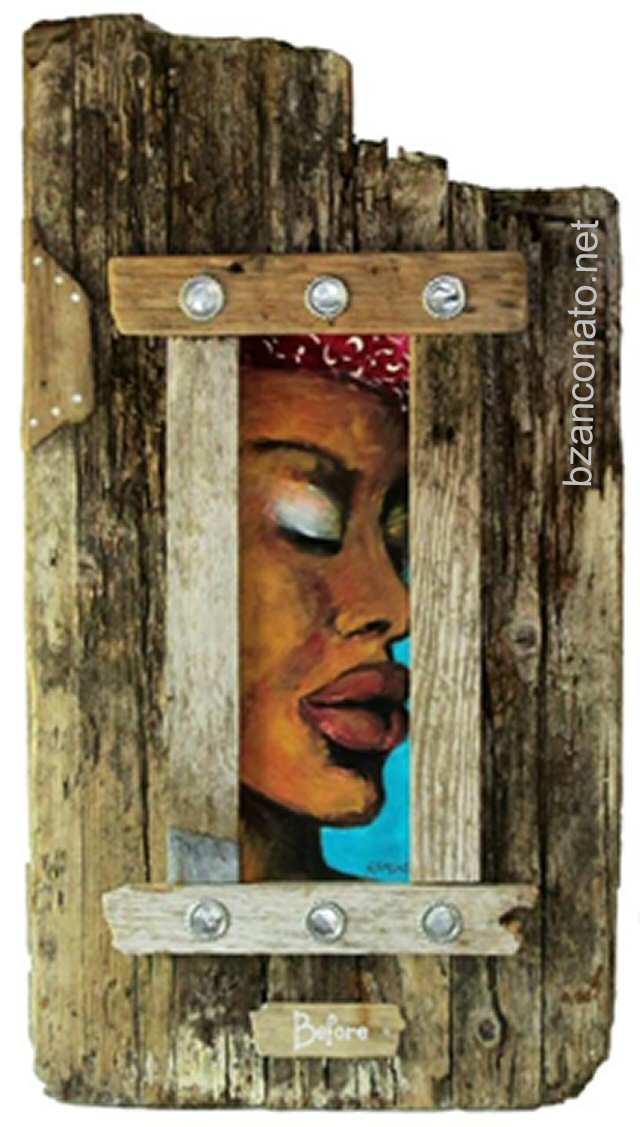
Symbol of her loneliness inside the home? Maybe. Or, conversely symbol of that solitude which helps and you need to go inside yourself, symbol of that concentration and the silence needed to grasp your deep voice, in search of your true values and the things in which you truly believe. Or symbol of that solitude which very often you are afraid and for which you accept false friendships, you accept to attend events that you're missing the sense and share private moments with complete strangers, that makes you say rarely what you think.
P. Mercier in his “Night train to Lisbon” describes very well the situation: “The loneliness that we fear: what is ultimately? Is it the silence of unspoken grievances? Is it not having to advance cautiously, holding our breath, on minefield of conjugal lies and of truth among friends? The freedom of not having anyone ahead of us when we have lunch? In plenty of time that unfolds when it mutes the tapping movements of appointments? Aren’t they all wonderful things? A heavenly condition? What is then the fear? Is it not ultimately a fear that exists for the only reason that we have not reviewed thoroughly its subject? A fear that has been inculcated by inconsiderate speeches of parents, teachers, priests? And because are we so confident that others would not envy us if they saw how much has grown our freedom? And that they would not seek our company for this?”
P. Mercier in his “Night train to Lisbon” describes very well the situation: “The loneliness that we fear: what is ultimately? Is it the silence of unspoken grievances? Is it not having to advance cautiously, holding our breath, on minefield of conjugal lies and of truth among friends? The freedom of not having anyone ahead of us when we have lunch? In plenty of time that unfolds when it mutes the tapping movements of appointments? Aren’t they all wonderful things? A heavenly condition? What is then the fear? Is it not ultimately a fear that exists for the only reason that we have not reviewed thoroughly its subject? A fear that has been inculcated by inconsiderate speeches of parents, teachers, priests? And because are we so confident that others would not envy us if they saw how much has grown our freedom? And that they would not seek our company for this?”
In response to these intriguing questions are two other artworks: “Skeleton” and “MAKES a DIFFERENCE”. “Skeleton” regains more explicitly the subject of introspection, go digging in the depths of our human essence in order to identify the constituent and fundamentals elements. The symbol of the skeleton in this respect is extremely powerful: the skeleton is the body element that sustains itself and the remaining set of organs and systems. It is also the body part that more withstands in the time. So, how much and what portion of our behaviour is linked to our unique and unrepeatable essence of individuals and how much and what is instead determined by superstructures that we were made to wear and that have sedimented and hardened over time? In this respect, the artist seems to recall the Greek myth of Er, according to which, before birth, every soul chooses a destiny, a paradigm that will affect the behaviour in life and then it has the possibility to complete. But once confirmed and made inescapable by the Moirae the choice made by the soul, a guardian demon is given to it. Before descending into the world the souls rest on the plain of the river Lethe and are forced to drink water because they are able to make forget. Those of them who drink much water will be those which least will remember their choice. Tutelary genius, however, never drinks water and when together with the soul is dropped on earth remains aware of the fate that remained chained: his task is to guide the soul toward the fulfillment of its destiny.
According B.Zanconato, "Skeleton" is a symbol of our essence, that is of that paradigm that our soul has chosen, the achievement of which represents the reason of our life. Over time, however, this
According B.Zanconato, "Skeleton" is a symbol of our essence, that is of that paradigm that our soul has chosen, the achievement of which represents the reason of our life. Over time, however, this
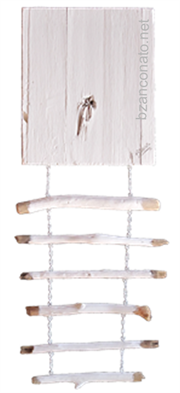
paradigm is covered with layers and layers of superstructures that were imposed to us, since an early age, through education and gradually is replaced by projections which even prevent us from to hear the suggestions that tutelary genius gives each one in form of intuition, dreams, passions.
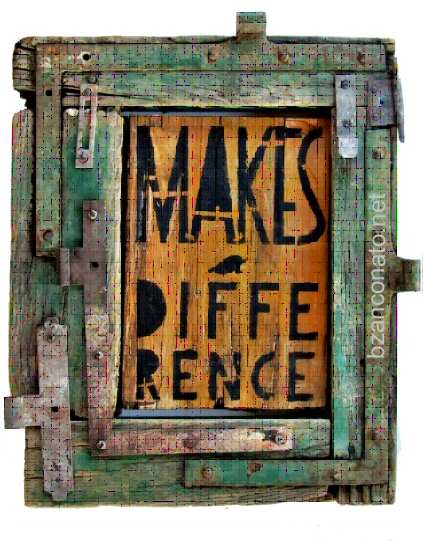
That's why the process of introspection and finding the human essence of each one is closely linked to loneliness: it is necessary to take some distance from things, from people, from the situations in order to see clearly what belongs to us and what we can and we must free ourselves or, in other words, to better hear the voice of our inner guide. And, at the same time, the inner dialogue, gives rise to thought (our thought) and to the definition of our values.
This is the only way to learn to re-know ourselves: remembering our essence and our deepest aspirations. Only then we will take possession of our lives rather than chasing with wheezing a generic myth of happiness that is being touted as carried in goods that we find in the shops but, at shopping done, turn out to be disappointing.
Achieve our full potential, develop our talents: this is what "MAKES a DIFFERENCE". Doing things because within us there is an unstoppable force that drives us to make them; follow a direction in our lives because we feel that, in spite of everything, that's our direction. Believe deeply in certain principles and values because we feel them as ours and we live them firsthand. Believe in our uniqueness and unrepeatability; believe in us and in our judgment. Believe that we have a potential to develop: this MAKES a big DIFFERENCE!
This is the only way to learn to re-know ourselves: remembering our essence and our deepest aspirations. Only then we will take possession of our lives rather than chasing with wheezing a generic myth of happiness that is being touted as carried in goods that we find in the shops but, at shopping done, turn out to be disappointing.
Achieve our full potential, develop our talents: this is what "MAKES a DIFFERENCE". Doing things because within us there is an unstoppable force that drives us to make them; follow a direction in our lives because we feel that, in spite of everything, that's our direction. Believe deeply in certain principles and values because we feel them as ours and we live them firsthand. Believe in our uniqueness and unrepeatability; believe in us and in our judgment. Believe that we have a potential to develop: this MAKES a big DIFFERENCE!
"Teshuvà" (תשובה), the artwork that gives the title to the overall show, is a synthesis of all these themes. The invitation which the artist seems to launch is to keep distance from attitudes and manifestations only for show, from cosmetic actions, not to be afraid to stay out of the group, from the chorus of voices all look the same, but, instead, to establish a dialogue with ourselves and retrieve our true essence. Teshuvà, then, in the etymological sense: we have to return to ourselves, to our true needs and aspirations, to our true essence that doesn’t need uniforms to protect itself, that doesn’t need a gender to identify itself. Like the subtle human figure outlined in the artwork: male or female, it doesn't matter. What matters is the journey, the path, to make, to create, without having superstructures and unnecessary weight that cramp (like the red cloth that is about to fly away), without blocking chains (like those that hang on the sides). Teshuvà, with confidence that this possibility is in our hands and that neither the legacy of the past, nor the practical conditions of today can stop our potential to change and improve ourselves.
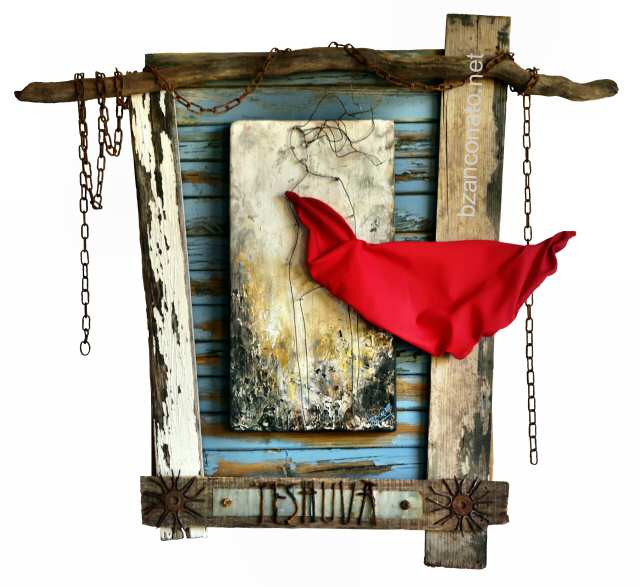
And with confidence that this might have an effect also on relationships with others. This is the education that the artist hopes and that might actually be the key for the change.
“Create freedom,
create a sacred no even in the face of duty. ...
Take the right to new values
is the more terrible taking that there is …”
F. Nietzsche, “Thus spoke Zarathustra”
create a sacred no even in the face of duty. ...
Take the right to new values
is the more terrible taking that there is …”
F. Nietzsche, “Thus spoke Zarathustra”
